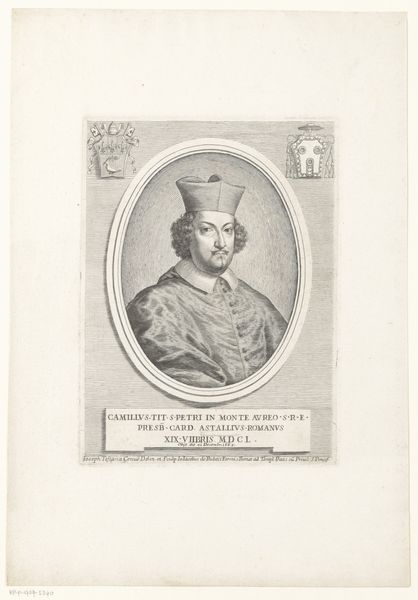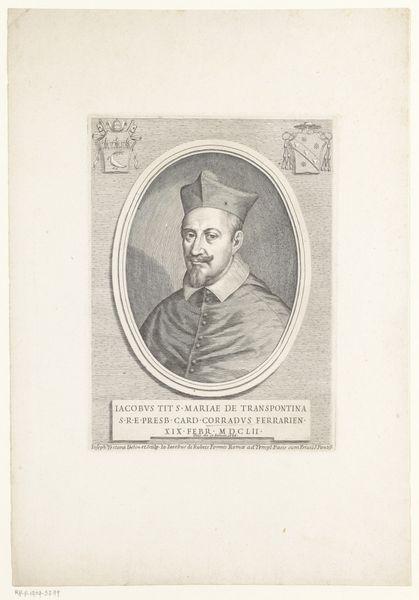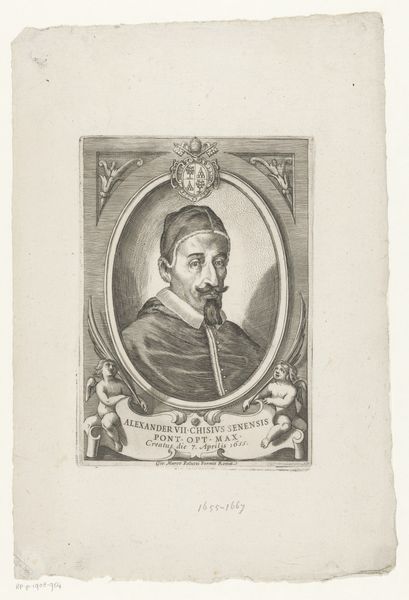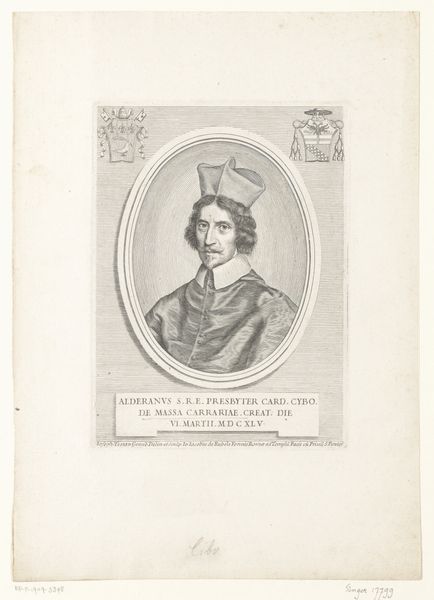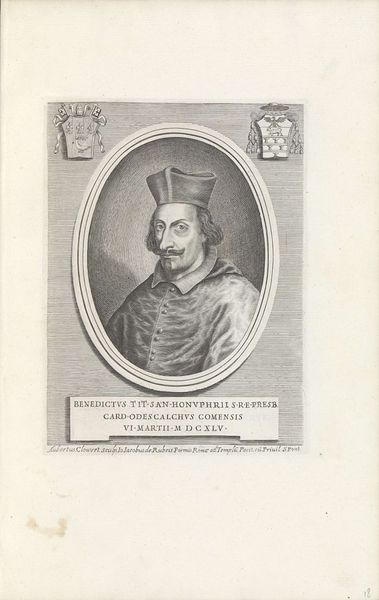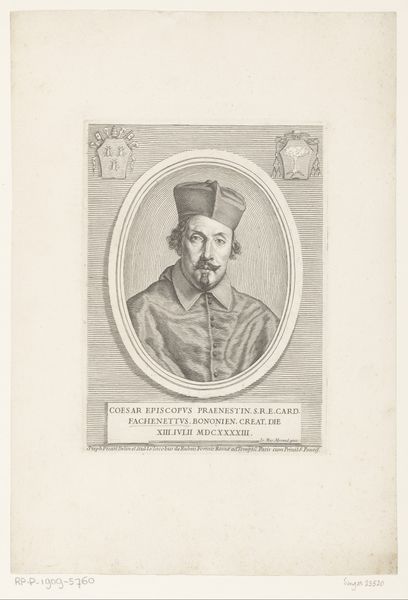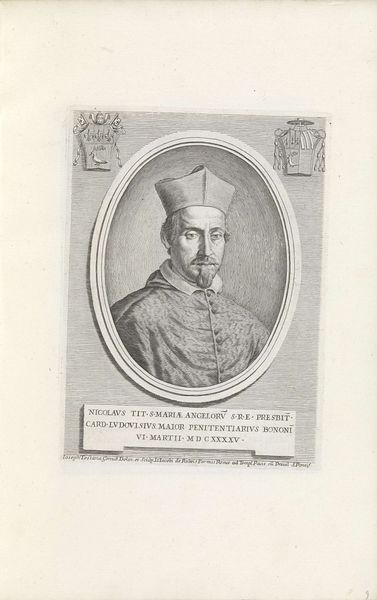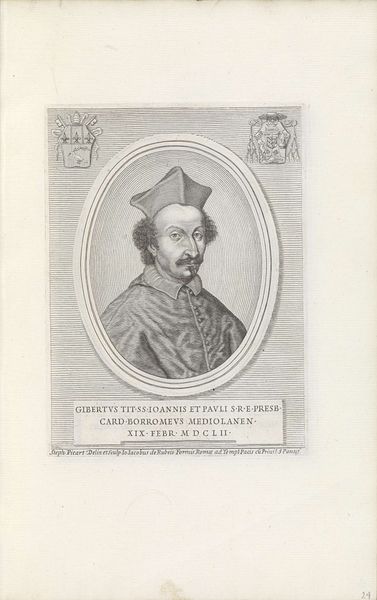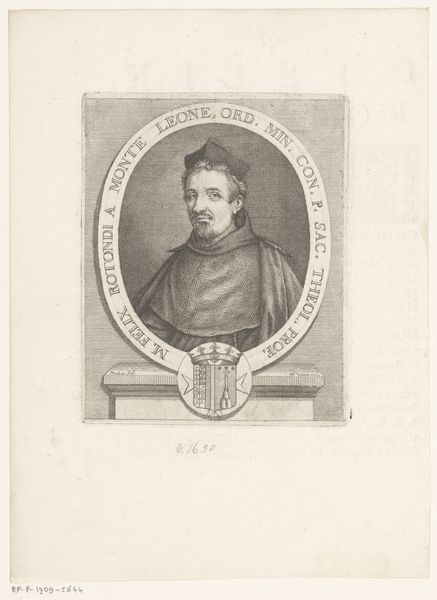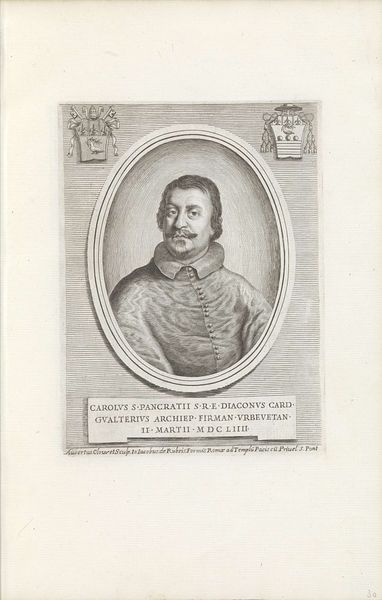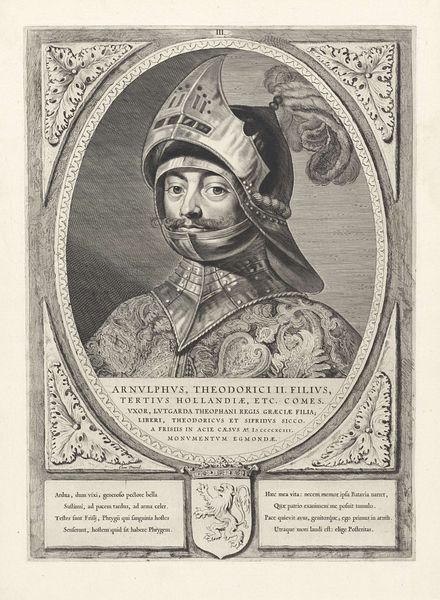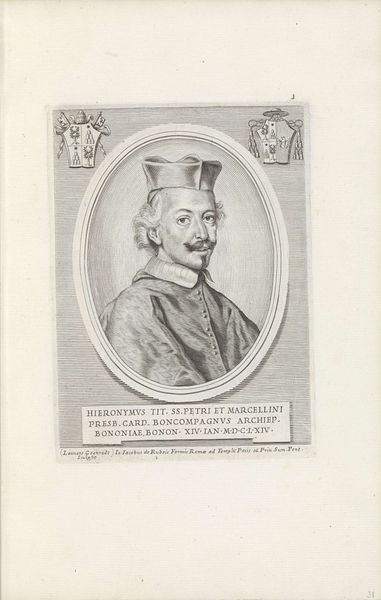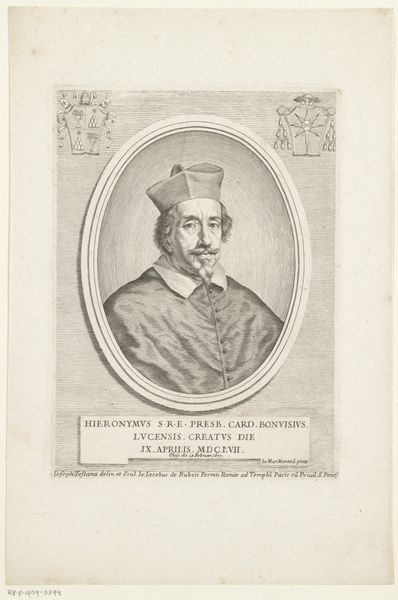
print, engraving
#
portrait
#
aged paper
#
baroque
# print
#
old engraving style
#
engraving
Dimensions: height 198 mm, width 145 mm
Copyright: Rijks Museum: Open Domain
Curator: We’re looking at a piece entitled *Portret van kardinaal Baccio Aldobrandini*. It’s an engraving dating from sometime between 1658 and 1679. The artist is Giuseppe Maria Testana. Editor: Ah, I love the feel of this. Immediately, the word "dignified" springs to mind. There's a stillness to it, almost meditative. Curator: Well, consider the subject! Cardinal Aldobrandini was a prominent figure in his time. Engravings like this served a crucial role in disseminating images of power and prestige. The portrait flattens out the visual differences, essentially making Aldobrandini legible and identifiable across broad swathes of Europe. Editor: I can see that, but I also appreciate how Testana captured a certain softness in his gaze. There’s wisdom and a hint of sadness there, you know? It’s more than just an image of authority. The line work itself, so delicate. I could get lost in these textures. Curator: Testana’s technique certainly speaks to the Baroque period's embrace of ornamentation and detail, though, practically speaking, it’s likely meant to reproduce painterly qualities through the relatively accessible technology of engraving, broadening its distribution. We see this trend often; it isn’t just art, it is art *used* for a certain socio-political purpose. Editor: Purpose, yes, but I reckon Testana, in all that careful detail, was adding something personal too, beyond just reproducing. It’s got life. Curator: Undoubtedly, artistry is present, but within the constraints and expectations of the era. The family crests included at the upper edges, for example, serve not only to visually emphasize the lineage of Aldobrandini, but in a museum context today, help us track down this particular print and relate it to others depicting related members of the aristocracy. Editor: Makes sense. But looking at it—not just thinking about it—makes me feel oddly connected to a moment in history. Power and humanity caught in the same breath. Curator: Exactly. By understanding the historical function, and experiencing it as an image, perhaps we are better prepared to unpack similar dynamics in the present. Editor: A fancy way to say it’s still pretty relevant, huh? I like that.
Comments
No comments
Be the first to comment and join the conversation on the ultimate creative platform.
